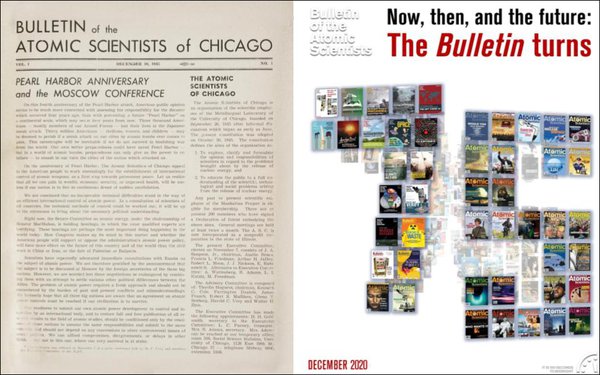Even A Broken Doomsday Clock Is Right Twice An Existential Threat
- by Joe Mandese @mp_joemandese, December 7, 2020

The funny thing about doomsday clocks is that eventually they will be right. But remarkably, after 75 years of adjusting humanity’s doomsday time line, we are still here, and so is the Bulletin of the Atomic Scientists, which celebrates its diamond -- er, jubilee? -- with an edition hitting newsstands and inboxes today.
The good news is that people are still around to subscribe to and read it. The bad news is that its trademark Doomsday Clock -- the one conceived by the magazine’s original atomic scientist founders to symbolize the dangers of existential threats like nuclear armageddon -- currently stands at 100 second to “midnight.”
That’s where it was set in January 2020 -- long before the global COVID-19 pandemic surged -- but with other existential threats abounding, especially the simultaneous Big Two: nuclear war and climate change.
advertisement
advertisement
In its update then, which moved the clock 30-second closer to midnight, the editors noted that both those threats were “compounded by a threat multiplier, cyber-enabled information warfare, that undercuts society’s ability to respond.
“The international security situation is dire, not just because these threats exist, but because world leaders have allowed the international political infrastructure for managing them to erode.”
Eleven months later, the Bulletin’s forewarning about the role of information warfare seems as relevant as ever.
“Many publications that were staples of American life 75 years ago are either long gone or only a pale shadow of their former selves,” notes Bulletin Editor-in-Chief John Mecklin, adding -- ironically -- that the Bulletin’s own relevance has moved in the opposite direction:
“In addition to our original focus on the threat of nuclear war, the Bulletin also now shapes the cutting edge of thought about reducing the dangers posed by climate change and a host of disruptive technologies, including the online venues that spread disinformation and erode public faith in science and democracy. Because of its focus on 21st century challenges, the Bulletin is more widely read and closely watched than ever before.”

